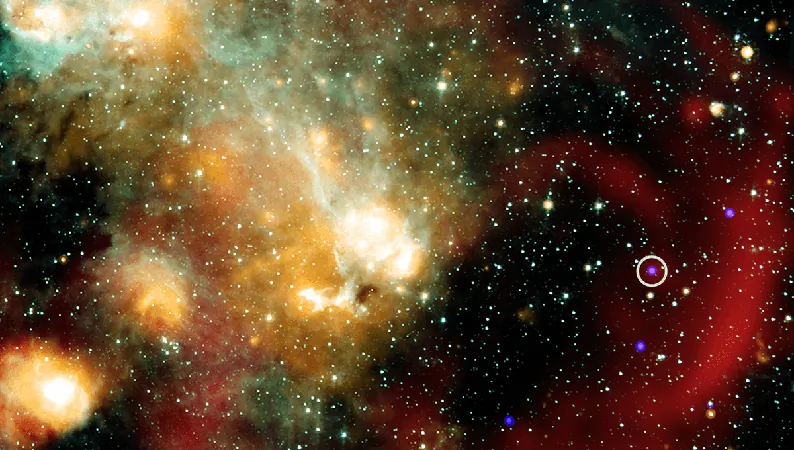
**Mysterious Cosmic Signal Baffles Scientists: What Could It Be?**
2025-06-02
Author: Charlotte
An Unprecedented Discovery from the Depths of Space
Last year, a groundbreaking discovery took place in the vastness of our galaxy, courtesy of Australia's national science agency, CSIRO. Utilizing the ASKAP radio telescope on Wajarri Country, researchers detected a bizarre signal from a cosmic entity called ASKAP J1832-0911, which uniquely emits radio waves in a rhythmic pulse every 44 minutes.
What Are Long-Period Transients?
Lead author Ziteng (Andy) Wang noted that these long-period transients (LPTs) represent a newly identified type of cosmic object that emits stunning radio flashes at intervals ranging from minutes to several hours. This behavior starkly contrasts with the rapid pulses typically observed from dead stars, such as pulsars, adding layers of mystery to these phenomena.
An Enigma with No Known Precedents
ASKAP J1832-0911 stands out for its peculiar behavior and appearance. Correlating its signals with high-energy X-ray emissions detected by NASA's Chandra X-ray Observatory revealed further complications in understanding the source of these signals. Notably, this enigmatic object did not show up in previous candid observations of the area, suggesting it may have undergone a significant event that turned it 'on' shortly before its discovery.
A Bright Anomaly in Our Galaxy
By February 2024, ASKAP J1832-0911 displayed a striking brightness, ranking among the few celestial objects to achieve such intensity in radio waves within our galaxy. At an astounding distance of approximately 15,000 light-years from Earth, its characteristics defy the conventional models of stellar behavior.
What Could It Be?
Dr. Wang speculated that this unusual object could potentially be a magnetar—a remnant core of a deceased star with extreme magnetic fields—or perhaps a binary system where one star is a highly magnetized white dwarf. However, neither theory fully accounts for the peculiar phenomena being observed.
Opening New Frontiers in Astrophysics
Professor Nanda Rea, a second author on the study, highlighted that finding one such object hints at the existence of many more LPTs scattered throughout the cosmos. The discovery of ASKAP J1832-0911 may pave the way for fresh insights into these mysterious cosmic signals, inspiring further observations to unearth more clues.
The Quest Continues
Scientists remain committed to unraveling the secrets of this enigmatic object. Co-author Dr. Tong Bao from Italy's National Institute for Astrophysics expressed excitement over the ongoing investigation. He stated, "Finding a mystery like this isn’t frustrating—it’s what makes science thrilling!" The journey to understand ASKAP J1832-0911 is just beginning, and the cosmos continues to surprise us.









 Brasil (PT)
Brasil (PT)
 Canada (EN)
Canada (EN)
 Chile (ES)
Chile (ES)
 Česko (CS)
Česko (CS)
 대한민국 (KO)
대한민국 (KO)
 España (ES)
España (ES)
 France (FR)
France (FR)
 Hong Kong (EN)
Hong Kong (EN)
 Italia (IT)
Italia (IT)
 日本 (JA)
日本 (JA)
 Magyarország (HU)
Magyarország (HU)
 Norge (NO)
Norge (NO)
 Polska (PL)
Polska (PL)
 Schweiz (DE)
Schweiz (DE)
 Singapore (EN)
Singapore (EN)
 Sverige (SV)
Sverige (SV)
 Suomi (FI)
Suomi (FI)
 Türkiye (TR)
Türkiye (TR)
 الإمارات العربية المتحدة (AR)
الإمارات العربية المتحدة (AR)